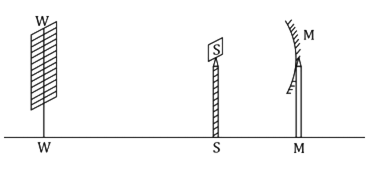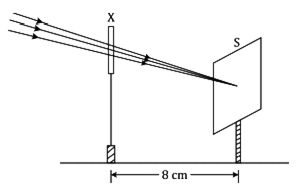 Multiple Choice Questions
Multiple Choice QuestionsWhat do we observe on pouring acetic acid on red and blue litmus papers?
Red litmus remains red and blue litmus turns red.
Red litmus turns blue and blue litmus remains blue.
Red litmus turns blue and blue litmus turns red.
Red litmus turns blue and blue litmus turns red.
A.
Red litmus remains red and blue litmus turns red.
While preparing soap a small quantity of common salt is generally added to the reaction mixture of vegetable oil and sodium hydroxide. Which one of the following may be the purpose of adding common salt?
To reduce the basic nature of the soap
To make the soap neutral
To enhance the cleansing power of the soap
To enhance the cleansing power of the soap
A student takes about 4 ml of distilled water in four test tubes marked P, Q, R and S. He then dissolves in each test tube an equal amount of one salt in one test tube, namely sodium sulphate in P, potassium sulphate in Q, calcium sulphate in R and magnesium sulphate in S. After that he adds an equal amount of soap solution in each test tube. On shaking each of these test tubes well, he observes a good amount of lather (foam) in the test tube.
P and Q
Q and R
P, Q and S
P, Q and S
A student obtains a sharp image of the distant window (W) of the school laboratory on the screen (S) using the given concave mirror (M) to determine its focal length. Which of the following distances should he measure to get the focal length of the mirror?
MW
MS
SW
SW

This device is a concave lens of focal length 8 cm
This device is a convex mirror of focal length 8 cm
This device is a convex lens of focal length 4 cm
This device is a convex lens of focal length 4 cm
A student traces the path of a ray of light through a rectangular glass slab for the different values of angle of incidence. He observes all possible precautions at each step of the experiment. At the end of the experiment, on analyzing the measurements, which of the following conclusions is he likely to draw?




A student traces the path of a ray of light through a triangular glass prism for different values of angle of incidence. On analysing the ray diagrams, which one of the following conclusions is he likely to draw?
The emergent ray is parallel to the incident ray.
The emergent ray bends at an angle to the direction of the incident ray.
The emergent ray and the refracted ray are at right angles to each other.
The emergent ray and the refracted ray are at right angles to each other.
28 A student was asked to observe and identify the various parts of an embryo of a red kidney bean seed. He identified the parts and listed them as under:
I. Tegmen
II. Testa
III. Cotyledon
IV. Radicle
V. Plumule
The correctly identified parts among these are
I, II and III
II, III and IV
III, IV and V
III, IV and V
Given below is the list of vegetables available in the market. Select from these the two vegetables having homologous structures:
Potato, sweet potato, ginger, radish, tomato, carrot, okra (Lady’s finger)
Potato and sweet potato
Radish and carrot
Okra and sweet potato
Okra and sweet potato
 Short Answer Type
Short Answer Type